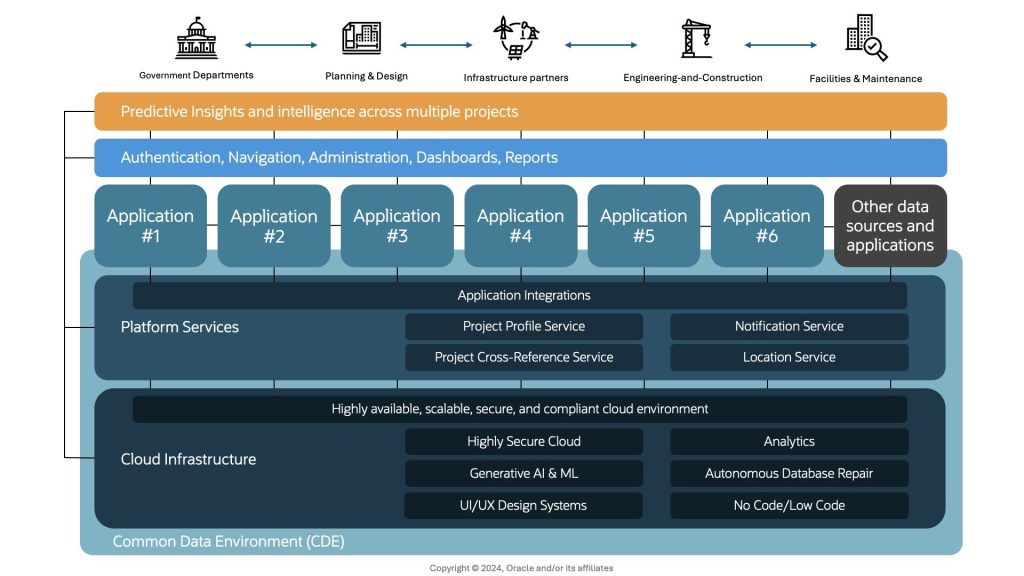When the Victorian government decided to build an integrated transport system for its growing population in 2019, it merged three departments to form a new Department of Transport that would oversee billions of dollars’ worth of capital works projects from start to finish.
A major challenge in creating such a large, diverse portfolio was ensuring accuracy in reporting, visibility in progress and consistency in data collection. All three would be required to reliably report on progress.
It soon became apparent, however, that its legacy systems weren’t sophisticated enough to handle the data management and streamlining of the numerous end-to-end business activities involved.
Another important task was joining together a number of standalone applications. These included cloud applications, and several that were hosted on its information and communications technology services platform.
The department chose Oracle Primavera Unifier and P6 along with a series of customised integrations hosted on Oracle Cloud Infrastructure (OCI) to support them.
Importantly, by connecting the day-to-day schedule across multiple projects in P6 to its overall capital portfolio management in Primavera Unifier, it had up to the minute information to help it make informed decisions. It also gained a single secure repository of all documentation and an audit trail of every decision.
“Without the visibility a connected platform brings an organisation, there’s a disconnect between contractors, subcontractors, developers and clients,” said Rogier Roelvink, Oracle’s Customer & Industry Value Director.
“In that scenario, how do you know that you know? Without a connected platform, summaries, reports and statuses often contain out-of-date manual inputs that are subject to human error and data trapped in a multitude of spreadsheets.”

Seamless integration
Project control typically involves planning, scheduling and risk management software, tracking tools and a performance measurement system. Integrating them to gain key insights is imperative. It’s also important to create a secure digital ecosystem that can manage integrations and provide security, compliance and interoperability.
“The use of many point solutions has got us so far, but in order to take advantage of some the developments in machine learning and predicative analytics, social and economic infrastructure capital works programmes require a digital infrastructure,” Roelvink said.
“That enables easy and secure integration with a range of applications, data centralisation and consolidation, and improved visualisation. All of which then improve reporting and budgeting capabilities. It’s worth remembering that not all cloud solutions are created equal, so choosing the right one is vital.”
Roelvink has identified six prerequisites to look for:
1. Trust in the data
For a broad range of stakeholders to adopt and use systems, they need to trust that their data is also protected and ‘sovereign’ on that system. Such trust is the key to adoption, and leads to optimal outcomes for each project.
2. Integrity of data
An indelible repository of data that’s searchable and eliminates duplication or erroneous versions is vital. The system should ideally be set up so that data can’t be deleted and provide the best audit trail to mitigate risk for all participants.
3. Integrity of platform
The cloud infrastructure, database and cloud application stack should be vertically integrated to ensure high levels of cyber resiliency.
4. Scalability
The platform should be scalable to accommodate different types (contractual and asset) and sizes (value and complexity) of projects and programmes in a portfolio.
5. Repeatability
It’s vital that the tools can be used across jurisdictions and project types to guarantee consistency of data collection. This means lessons can be learned and optimises the efficiency of capital projects over time.
6. Actionable insights
It’s important to ensure little or no manual intervention in data to get as close to error-free, trustworthy and up to the minute information as possible so teams can make informed decisions.
Building knowledge
Deployment of siloed point solutions without the connective tissue of a connected platform can be the root cause of inconsistent data across a portfolio or programme, especially when data and digital maturity varies wildly between the agencies involved.
In those circumstances, there’s no framework for learnings from one project to be applied to subsequent ones, even when the same federal or state authority is in charge. Each new development effectively starts from scratch, with no departmental build-up of knowledge over time.
“We’ve seen organisations achieve significantly improved performances when they adopt the right approach and connect datasets,” Roelvink said.
Oracle’s own data suggests those improvements typically include a team productivity boost of up to 23 per cent and an improvement in capital deployment of up to 28 per cent. Cost overruns can drop by as much as a fifth, project duration up to 10 per cent and safety incidents could reduce by over a third.
Such successful outcomes are driven in part by a recognition that project control has gone beyond the traditional ‘golden three’ of time, scope, and cost, expanding instead into the ‘golden six’ with additional consideration of risk, resources, and sustainability.
“It’s an example of how project control has evolved through the application of technologies and ecosystems of connected tools,” Roelvink said. “It now relies less on retrospective reports and more on digitally enabled analysis that’s predictive and pre-emptive.
“Actionable insights facilitate better decision making and are an important step in seeing data as a critical resource in democratising decision intelligence, thereby empowering people from the top to the bottom of an organisation to make informed choices.”
Find out more about Oracle’s smart connected infrastructure platform

